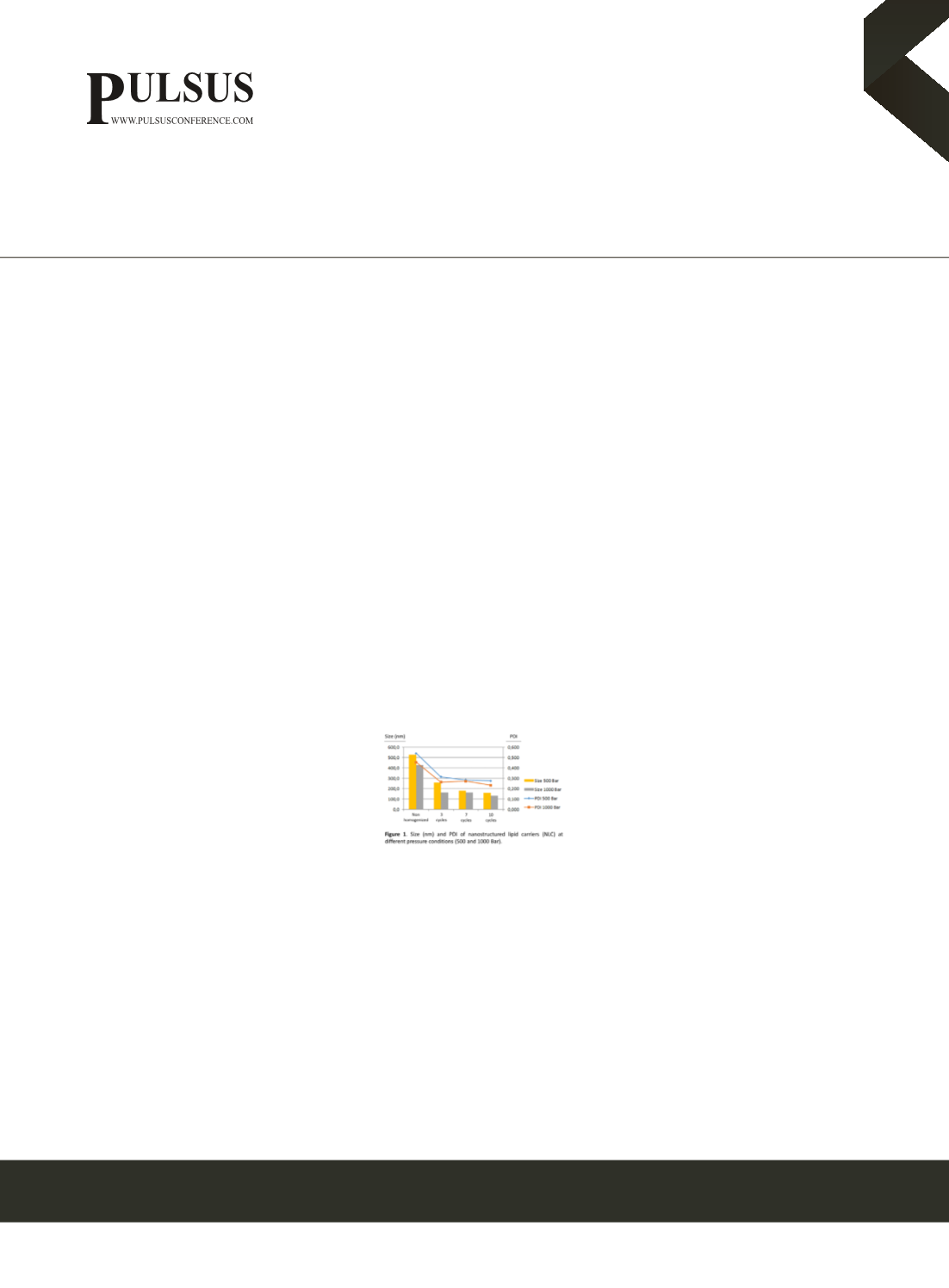

Page 32
Volume 3
Journal of Pharmacology and Medicinal Chemistry
Nanomedicine 2019
Biotechnology 2019
May 20-21, 2019
May 20-21, 2019 London, UK
4
th
World Biotechnology CONGRESS
Nanomedicine and Nanotechnology
4
th
International Conference on
&
Preparation and different sterilization approaches for Nanostructured Lipid Carriers
(NLC): Towards industrial production
Claudia Vairo
BioPraxis Research AIE, Spain
Statement of the Problem:
The transition of the production process of lipid nanoparticles from laboratory scale to industry
could be difficult. Firstly, when manufacturing lipid nanoparticles, i.e. Nanostructured Lipid Carriers (NLC), it is important to
obtain a homogeneous particle size. Secondly, for sterile products, aseptic manufacturing production is required, which implies
high costs (class A clean rooms, qualified personnel) and a tedious process validation. To tackle these problems, High Pressure
Homogeniser (HPH) could be a feasible equipment suitable for homogeneous industrial production of NLC (1) and, γ-radiation
could fulfill sterilisation requirements when carried out as a final sterilisation method (2). The purposes of this study are: (i)
to optimise the scaling-up of NLC production by using HPH and (ii) to demonstrate the suitability of γ-radiation as a simple
and fast final sterilisation method, maintaining chemical and physical integrity of the loaded drug. Methodology: NLC were
produced using the melt-emulsification method (3) including a homogenisation step by using the GEA PANDA HPH (Niro
Soavi, USA) at 500 and 1,000 Bar pressure conditions (and 0, 3, 7 and 10 number of cycles. The homogenised emulsions were
collected, lyophilised and obtained NLC were irradiated with a dose of 25kGy from 60Co following the European Pharmacopeia
recommendations (4). The resulting NLC were then characterised in size, Poly Dispersity Index (PDI) and zeta potential.
The drug release profile and chirality were also analysed before and after γ-sterilisation by circular dichroism. Findings: The
increase on the number of cycles resulted in a lower particle size and PDI; and 500 Bar were enough to obtain monodisperse
samples (Figure 1). Size, PDI, zeta potential, release profile and chirality were not affected by γ-radiation. Conclusion &
Significance: HPH and final γ-radiation may be useful to produce NLC in an easy and cost-effective manner at industrial scale.
Biography
Claudia Vairo has completed his Degree in Pharmacy (2012) from University of Salerno and a Second level master’s in pharmacology
from University of the Basque Country (2015). She works as R+D researcher in BioPraxis Research AIE pharmaceutical company
and she is completing her PhD studies in Pharmaceutical Technology, in collaboration with NanoBioCel Group from University of the
Basque Country. She has published 2 papers in reputed journals concerning medical devices, such as lipid nanoparticles, especially
nanostructured lipid carrier (NLC), and gelatin scaffolds, for the treatment of wound healing. Her investigation is recently focused on
NLC nanosafety.
cvairo@praxisph.comJ Pharmacol Med Cheml, Volume 3
















